Education is the beacon of society. The history of education in the Darjeeling Hills is yet another exciting dimension to explore in Darjeeling. The hill station of Darjeeling became famous not only for tea and tourism but also for its efficient educational system during the nineteenth century. Currently, according to Census 2011, the district stands in the sixth position in literacy rate with 79.56%, excluding the 0-6 age group among 19 districts of West Bengal. If we take only the effective literacy rate for the population older than six years, it was 93.17%.
I am fortunate to study in Darjeeling at St. Robert’s School, both Secondary and Higher Secondary, and then at St. Joseph’s College, North Point. In addition, I enjoyed teaching at Salesian College, Sonada, Darjeeling, for four and a half years. So, let’s explore the history of education in the Darjeeling hills, which shall attract the readers’ attention. However, I have divided the article into two parts because of the various categories and contributions. The second part is in the pipeline. I hope you will explore and enjoy education’s legacy and relevance in the ‘Queen of Hills.’
Table of Contents
The Genesis of Modern Education in the Darjeeling Hills with the Christian Missionaries:
Since the inception of Darjeeling, it became the educational hub where the indigenous people also received a Western education. We could divide the spread of modern education in India and Darjeeling into three places, Missionary enterprise, Official enterprise, private, and Indian enterprise. With the change in the economic system, traditional schools, such as Pathshala, tols, and Madrashas, slowly vanished because of the disappearance of social patronage. In Darjeeling, first, tols and Madrasahs were introduced much later in 1917 and 1910, respectively, but early settlers such as Lepchas, Bhutias, and Limbus followed their non-formal educational system.
Throughout the 18th and 19th centuries, the monasteries provided parochial education in Lamaist Buddhist scriptures and rituals. However, monastic education spread before the close of the decades of the 18th century and was the only available educational means in Darjeeling. Most Indigenous education systems could not stand the direct competition with Missionary activities in Darjeeling. Slowly, these schools disappeared, but monastic education remained because of the Buddhist Communities of Darjeeling patronage.
Since the beginning of the nineteenth century, systems and institutions of indigenous education in India were gradually being replaced by the Western education system. Christian Missionaries, along with other voluntary organizations played a significant role in the Darjeeling hills in spreading education among the masses. Although, the people of the Darjeeling hills showed satisfactory progress in the education imparted by the missionaries down from the primary level.
For the subsequent introduction of modern education, the district owes much to the efforts of various European Christian Missions. Christian missionaries such as the Baptist missionary society and Church of Scotland missionary society played a vital role in educating the masses. Many Europeans (mainly British) settled in Darjeeling town since its genesis, and arrangements had to be made for their children’s education. In 1846, the Vicar Apostolic of Bengal, Dr. Carew, sent some Loreto nuns to establish a Convent school in the hills for the children of European families. This school was later named Loreto Convent (a Roman Catholic institution for girls).
Further, the Church of Scotland Mission’s subsequent work became the most crucial factor in spreading education among the local people. The intention was to impart a very high education standard to the European community’s children. Many schools were initially introduced as primary schools and later upgraded to Secondary Schools. Missionary efforts provided Primary, Secondary, Higher Secondary, and Vocational education to European and Anglo-Indian children. The Catholic missionaries emphasize intellectual growth and physical development through games and sports.
History of popular European/Boarding Schools in the education of the Darjeeling hills:
Darjeeling became famous as a center of European education in the nineteenth century. Most of the European schools in the district are secondary schools that follow the Western model. There are many European schools in the Darjeeling hills. Let’s look into the background of the boarding schools one by one.
Loreto Convent School, Darjeeling:

The earliest of the European schools in the district was the Loreto Convent for Girls, founded in 1846. The Loreto nuns of the Irish Roman Catholic Loreto Order managed it. In April 1846, Dr. Carew, Archbishop of Calcutta, asked the Loreto Sisters to open a branch school of Loreto House Calcutta in Darjeeling, which had an excellent climate and envisioned education of the highest caliber. The Archbishop missioned Mother Teresa Mons and a group of Sisters of Loreto in 1846 to begin their quality education work. They built the present convent with funds provided by William Moran, a tea broker, and T. R. Laughnam, ICS and District Judge of Darjeeling.
St. Joseph’s School, North Point:
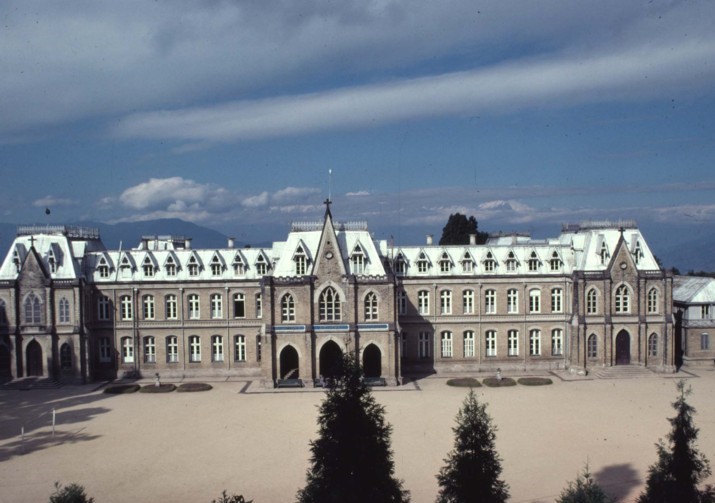
Fr. Henri Depelchin founded St. Joseph’s School Darjeeling on 13 February 1888. St. Joseph’s School, a private Catholic school for boys in Darjeeling, commonly called North Point, is in Singamari, between Darjeeling and Lebong. Known initially as St. Joseph’s College until the college section separated from the rest of the school. The school opened under the direction of the Fathers of the Society of Jesus in a building known as St. Joseph’s Seminary, Sunny Bank, and transferred in 1892 to its present site at North Point. St. Joseph’s College, North Point, Darjeeling, conducted by the Jesuit Fathers under whom the Rector of the College is in charge. The Catholics of Calcutta and Darjeeling repeatedly appealed to the Pope for a Catholic institution run by the Jesuit order in Darjeeling.
Fr. Depelchin bought nine acres of land from the Bengal government and eight acres from the Maharaja of Burdwan. The Viceroy, Lord Dufferin, helped to transfer Government land to the Jesuit Mission. The school was officially blessed by Archbishop Goethals in December 1890, after the construction of the school building was completed. Year after year, the students at North Point excelled in academics and cricket for the first time. In 1954, there were 28 different nationalities represented among the students at the school, according to the records.
St. Paul School, Darjeeling:
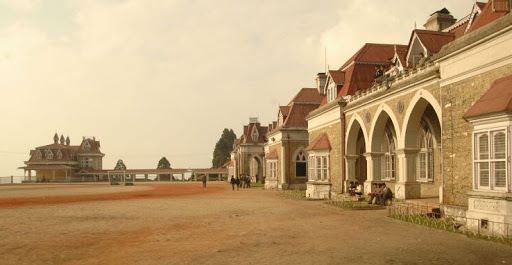
St. Paul School was established in 1864. It has a fascinating history too. In 1823, the Parental Academic Institution was established to meet the educational needs of the growing British and Anglo-Indian community in Calcutta. Bishop Wilson, who had affiliated the school with St. Paul’s Cathedral in Calcutta, the school renamed St. Paul’s School in 1847. Bishop Cotton moved the school to Darjeeling in 1863 because of financial issues. So, finally, this school shifted to its present Jalapahar (“Burning Mountain”) estate in Darjeeling in 1864.
Victoria Boy’s School, Kurseong:
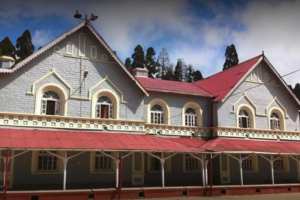
The oldest of the schools for Europeans in Kurseong is the Victoria Boys’ School. It was first established at Constantia by Sir Ashley Eden, then Lieutenant Governor of Bengal, in 1879 as a co-educational institution but was removed to Dow-Hill in 1880. Originally, it was established for railway employees, and they extended its scope to Government servants of all classes and the children of officers paid out of local funds. The children of non-officials are also admitted, but they pay higher fees. The current Victoria School for Boys opened in 1897, and they separated the Dow Hill School for Girls.
Victoria Boy’s School heritage English medium boarding school run by the Government in Kurseong, a hill town in Darjeeling. Dow Hill School was the school’s original name (between 1879 and 1888). After a decade, the boys’ school moved to its current location one kilometer away and was renamed ‘Victoria Boys’ School’ to commemorate Queen Victoria, Empress of India’s Jubilee year. Sir Charles Elliot, who had funded the new building, authorized the reopening of the girls’ school in the former school building and the ‘Dow Hill Girls’ School’ founded in 1898.
Mount Hermon School, Darjeeling:
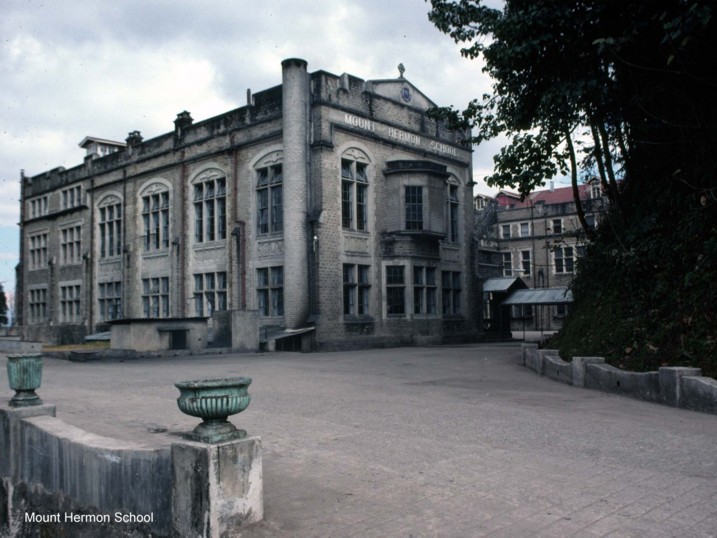
Mount Hermon, an institution of the Methodist Episcopal Church of America, is a co-educational school founded in 1895. It is in North Point, Singamari. Mount Hermon School was founded by Emma L. Knowles, who became its first principal. Mount Hermon was well-known as Arcadia, initially and later renowned as Queen’s Hill School. It was originally a girls’ school with a small department for junior boys. In 1926, the school moved to North Point, where the main building was erected in the Mount Hermon Estate, purchased from Lebong Tea Company by Bishop Fisher.
Goethals Memorial School, Kurseong:
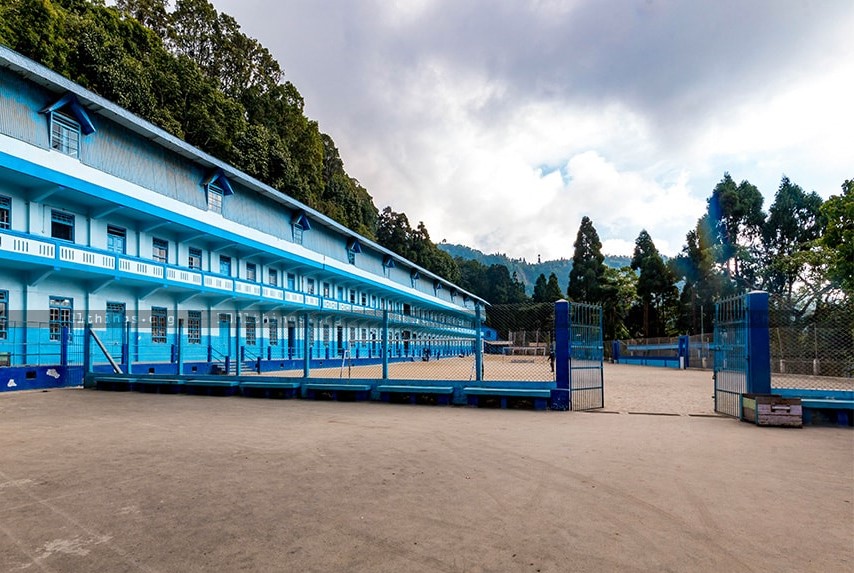
The Goethals Memorial School was founded in memory of the Most Rev. Dr. Paul Count Goethals, S.J., Archbishop of Calcutta. Goethals Memorial School is an Indian boarding school run by the Congregation of Christian Brothers. It is five miles north of Kurseong, 5500 feet above sea level. In 1903, the Christian Brothers arrived in Kurseong to open a school after meeting with Archbishop Meulemann. The Maharaja of Burdwan sold them 140 acres of land. After clearing the site, Bro. John Molitor was entrusted with the building’s construction. The construction of the school and hostel took four years.
Sir Andrew Fraser, Lieutenant Governor of West Bengal, inaugurated the school in February 1907. Bro. S O’Brien was appointed as the school’s first principal. The School accepted Catholic boys from Europe and Anglo India, Christian boys from other denominations, and non-Christians as boarders.
St. Joseph’s Convent, Kalimpong:

St. Joseph’s Convent, Kalimpong founded in 1926 by the Missionaries of the Roman Catholic sisters of St. Joseph’s of Cluny. At first, they established it as a sanatorium for the sisters teaching in the plains. Still, gradually it turned into a vital education institution with a boarding school for European and Anglo-Indian girls. They also admitted boys up to the age of eight. At first, Junior and Senior Cambridge examinations were introduced. Later, it followed the examination system of Calcutta University.
In 1919, Fr Jules Douenel of the Foreign Mission Society of Paris discovered Kalimpong was accepting new residents. So, without further delay, he approached the Sisters of St. Joseph of Cluny from Chandan Nagar, inviting them to open a Holiday Home in Kalimpong, which could later become a house for education. The British Catholics of Kalimpong asked the nuns to open a girls’ school. They founded the school in 1926. In 1929, children from the Royal families of Sikkim and Bhutan were studying at St. Joseph’s Convent.
Read the book review of ‘Darjeeling: In Search of People’s History of the Hills‘ for more information about Darjeeling.
History of Schools for Natives in the Darjeeling hills:
However, most of the indigenous schools in India did not get recognition and financial help from the Government, so they died slowly a natural death. When they failed to· serve the purpose of educating people gradually, the modem Western education system ultimately brought all the people together and introduced the advanced curriculum of the West.
After the Rev. William McFarlane in 1869, vernacular education was devised for the district. He created the nucleus of the Training school at Kalimpong. Because of MacFarlane’s effort, there were 25 primary schools in 1873 in the district. Lepcha and Bhutia Boarding and Artisan School opened and kept under the special supervision of the Deputy Commissioner and the School Committee of Darjeeling.
Darjeeling School, Darjeeling:
In 1856, the Darjeeling school was established. The Darjeeling Government High School, previously known as the Darjeeling Anglo-Hindu School and then Darjeeling Zilla School was established as a Government managed Middle-English School. They split the school up into two, one a boarding school for Bhutias and Lepchas and the other aided school for Bengalis and Hindustanis.
Bhutia Boarding School, Darjeeling:
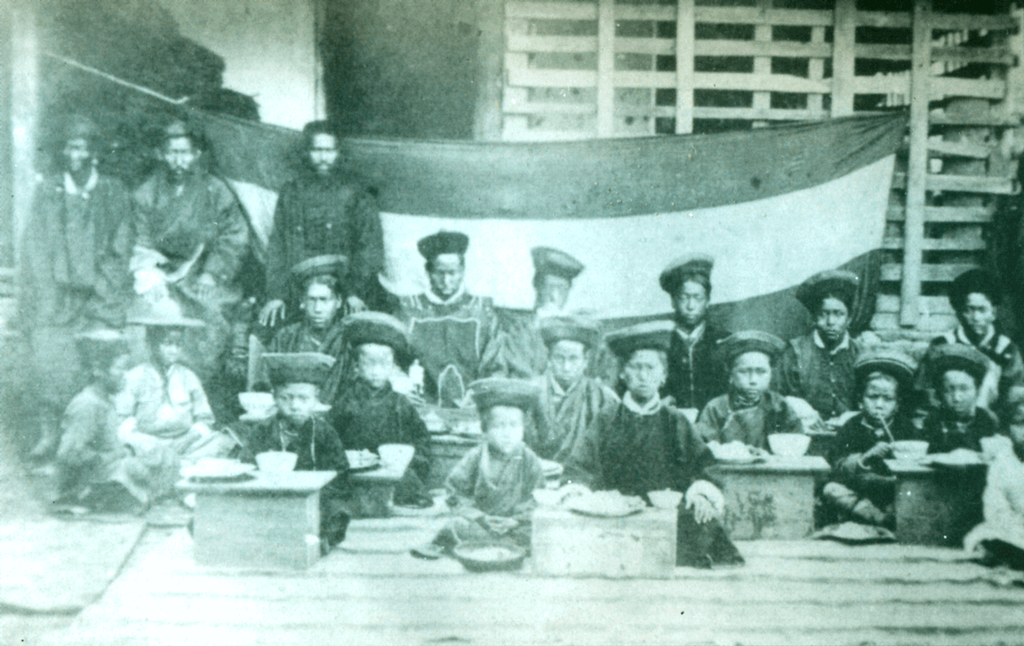
Bhutia Boarding School was established in 1874. The Bhutia Boarding School aimed to educate young Tibetan and Sikkimese boys who lived in Sikkim or the Darjeeling area. Its first director was Sarat Chandra Das, a Tibetan monk of Tibeto-Sikkimese origin and Professor of Tibetan Ugyen Gyatso (both of them are standing on the left row in the above photo).
Darjeeling Government High School, Darjeeling:

Darjeeling Government High School started after amalgamating Bhutia Boarding School and Darjeeling Middle (Zilla) School. These two schools amalgamated in 1892 and upgraded to High School status. The school’s first headmaster was the renowned Tibetologist Sri Sarat Chandra Das, who was also an explorer and linguist expert in Tibetan, Lepcha, and Nepali languages. It is open to all natives, and many students are the children of plain immigrants, such as native government clerks and other Bengali and Hindustani residents in Darjeeling. Besides, there are also Nepalis, but a few of the pupils are Bhotias and Lepchas.
St. George’s H.S. School, Pedong:
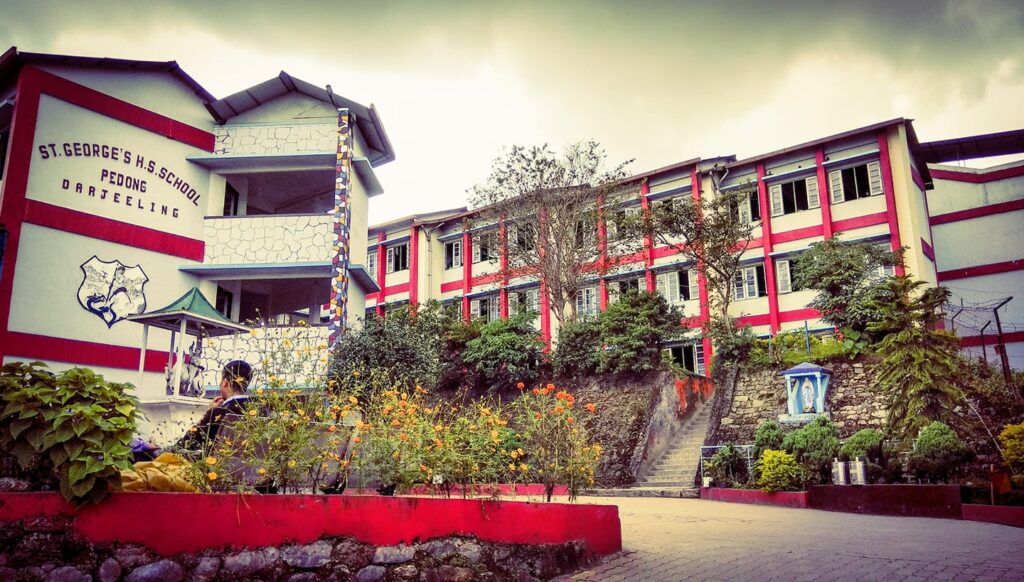
St. George’s Higher Secondary School is a minority Christian Educational Institution run by the Catholic Bishops of the Diocese of Darjeeling. French Fathers had learned Tibetan and held informal classes, which eventually developed into a school in 1885. By 1911, it had developed into a full-fledged middle school. The French Fathers handed over the School to the Canon Regular Fathers of the Abbey of Maurice in Switzerland in 1937. The school was affiliated with the West Bengal Board of Secondary Education in 1952.
St. Alphonsus H.S. School, Kurseong:
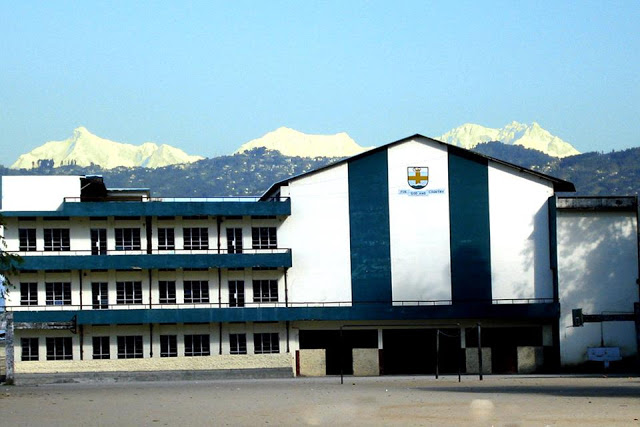
St. Alphonsus School was established for native pupils by the Roman Catholic Church as a primary school in 1888 outside the municipal area of Kurseong. However, the school upgraded to a high school level in 1936. The origins of St. Alphonsus School are traced back to Fr. Motet, a Philosophy Professor at St. Mary’s College. Fr. Michael Wery, who was also in charge of the school, invested his heart and soul in the development of St. Alphonsus School. He placed a premium on vocational education, introducing carpentry, tailoring, and shoemaking.
Archbishop Meulemann purchased the Clarendon Hotel in Kurseong in 1937. The hotel converted into a beautiful school building. Fr Joseph Murray Abraham took over as principal of the school in 1960. Later, as part of work education, Fr Abraham demolished the hotel and built the current school with the help of students.
St. Helen’s H.S. School, Kurseong:
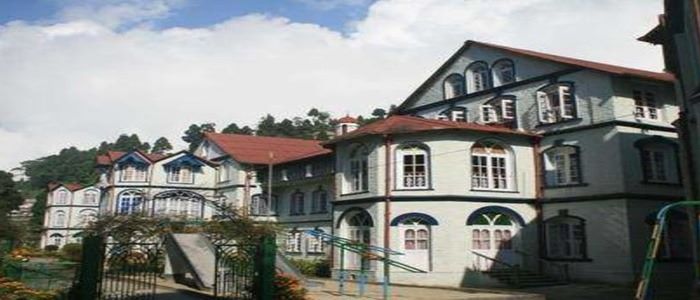
On April 17, 1890, the pioneering Sisters arrived from Calcutta and welcomed the girls into their convent. The Mother Superior of the Sisters began looking for a new location for the school. By 1902, they had completed the new school. The Mother Superior, Sr Marie Aimec, named St. Helen’s Technical School. The authorities in St. Helen’s placed a high value on music. In 1903, they designated the school as the location for the Trinity College of Music Examinations. In 1910, St. Helen’s school was made a secondary school, and in 1913, it upgraded to Higher Secondary School. Daughters of the Cross nuns run St. Helen’s School.
St. Michael’s H.S. School, Darjeeling:

St. Michael’s School is on Darjeeling-Jorethang Road, just below St. Joseph’s School, North Point. It is a co-educational school affiliated with the West Bengal Board of Secondary Education. They started initially as a primary school in 1925 by Fr. Michael Donough to educate the children of St. Joseph’s College employees. St. Michael’s School was recognized as a Junior High School on 23rd February 1979. The Jesuits handed over the charge of the school to the Sisters of St. Joseph of Cluny in 1982.
St. Teresa’s H.S. School, Darjeeling:

St. Teresa’s School is situated just below Loreto Convent, Darjeeling. The school started with the education of local girls. Mother M. Baptista Murphy gathered seven little girls on 3rd October 1926, on the feast of St. Teresa of Lisieux. The authorities of Darjeeling recognized St. Teresa School as a Primary School in 1939. The school elevated to the status of a high school in 1956. Sister Christine Gurung was appointed Principal of St. Teresa School, and the school upgraded to Higher Secondary status in 1972.
St. Robert’s H.S. School, Darjeeling:
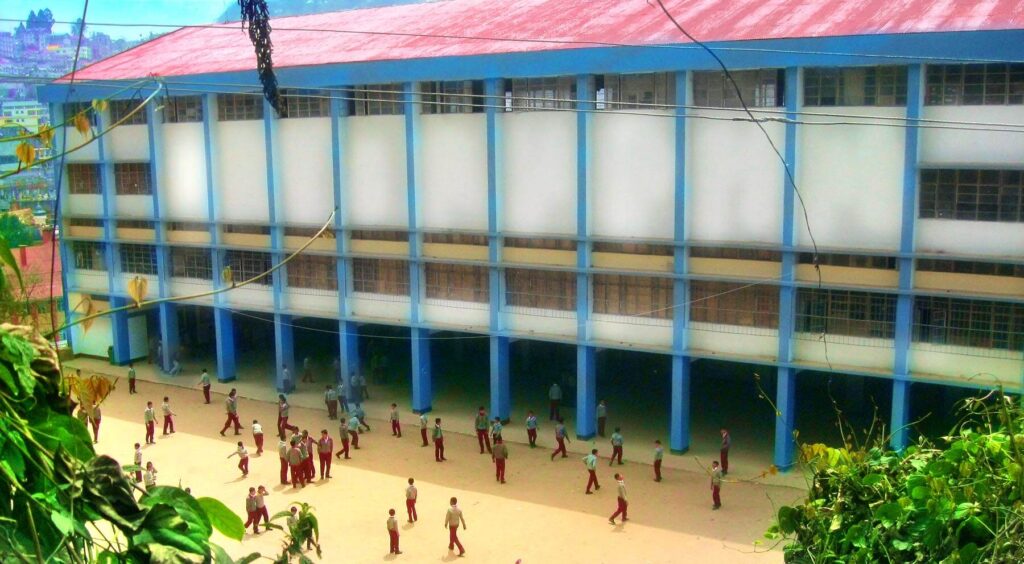
St. Robert’s H.S. School is a Christian minority school established in 1934 in Halcyon House, Darjeeling, administered by the Roman Catholic Diocese of Darjeeling. At present, the school is above Bishop’s House, Darjeeling. It was the successor to St. Francis Xavier’s Middle English School, which was founded in 1914 on the grounds of Archbishop’s House by Rev. Fr. Charles Grant.
Darjeeling’s Jesuit authorities opened a school for local boys in 1931. It also decided that the school would be Nepali medium. The school’s name is preserved in honour of Saint Robert Bellarmine, an eminent scholar of the 15th century. The University of Calcutta recognized it as a High School in 1935, with English as the medium of instruction. St. Robert’s School was admitted to the West Bengal Board of Secondary Education in 1974. The year 1990 marked a watershed moment in the history of St. Robert’s School as the administration shifted from the Jesuit Order to the Roman Catholic Diocese of Darjeeling.
Ramakrishna Siksha Parishad H.S. School, Darjeeling:

Ramakrishna Siksha Parishad (R. K. S. P.) The school was established by Swami Prabuddhananda in 1944 and managed by the Department of Education. Swamiji set up his school at Bara Kak Jhora, near Victoria Falls. The school shifted twice because of some problems and was finally set up on the upper ridge of Darjeeling town, near Raj Bhawan. This school is affiliated with the West Bengal Board of Secondary Education and the West Bengal Council of Higher Secondary Education. The School got its recognition as a Secondary School in 1949 and as a Higher Secondary in 1984.
The Missionaries of the Church of Scotland Mission established the Sukhia Pokhri Primary School in 1900 for the first time in rural Darjeeling. In 1953, they affiliated it with the Board of Secondary Education and renamed the Sukhia Pokhri High School. The Turnbull School at Darjeeling and the Ghum Boy’s School opened in 1906 and 1910 and became high schools in 1952 and 1956, respectively. Likewise, Darjeeling Hindi High School was founded in 1934 and run by the Department of Education. It is a co-educational school in the Darjeeling Municipality block. Holy Cross Girls’ School, Sonada established in 1972. In 1978, the West Bengal Board of Secondary Education designated the school as a high school.
Likewise, only in the towns of Darjeeling and Kurseong were their primary schools managed by municipalities.
The article discussed the growth of education in the Darjeeling hills with particular emphasis on Primary, Secondary, and Higher education and the role of Missionary and Government institutions in spreading education in the hills. The Catholic and Protestant churches, the Buddhist monasteries, and their support for central schools, the Sai Bhakti Sangh, the Bahais, and the Islamic or Ramakrishna mission organization running schools have contributed to the education which reveals the cultural pluralism in the hills. So, the education and educational institutions, irrespective of caste, sex, creed, and religion, contributed to the Darjeeling hills.
Read PART-II OF History of Education in the Darjeeling Hills, where I have highlighted the Collegiate and other informal education and the educational institutions of the colonial Darjeeling hills.

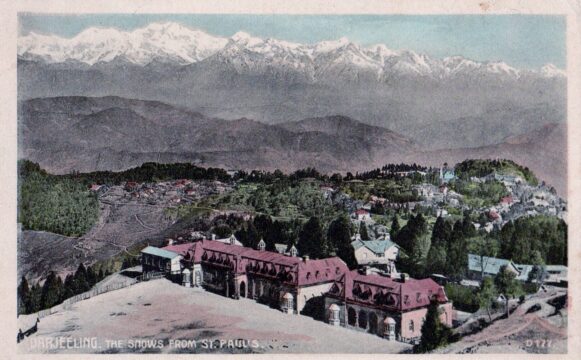
Very nice Sir
Informative
Dear krishan yet another really informative article. It gave me a much needed information about the education system of our hills. Enthusiastically waiting for Part II.
Very informative. Looking ahead for more on history of Darjeeling from you.
Very informative I got to know about my school STS n also about others school 🥰always the best 👍🏻
Excellent. Your observations are very useful. I can get a clear picture of education system at Darjeeling through your writing. Thank you so much for such a nice presentation.
It’s very interesting
So proud of you sir 👌👌
This is a commendable effort Prof HARIJAN.
Superb Kishan… You orchestrated the legacy and the institutions so well.. Thanks for sharing the heritage of educational evolution in Darjeeling.. Just one delimna why not u mentioned Darjeeling Hindi High School as I believe it had also a significant historical as well as prominent significance and contribution in the process of the evolution too.. I might be wrong just came in my mind as I m from that school… Superb writing and please keep it up.. Thanks a zillions..
Dear Rakesh, Thank you for the observation. Nicely written. Actually, little information about the Hindi High School is mentioned in the second last paragraph of the post. You can have a look. Basically, this article explores more about the popular schools in the British period although Hindi High School(1934) does have a great legacy and also plays an important role for the population (mostly Hindi speaking) of the hills (Hindi was chosen as the important language after English). The pending details (Part II) for the Collegiate and informal education is coming after a week as I am working on it. Best wishes
Kudos! Wonderful write-up dear Kishan da! It was very informative and interesting. Now eagerly waiting for the next part.
Nice.
Very informative. Looking forward for more such posts.
Very nice sir.very informative and interesting.waiting for next article.
Nice Dada History of Education in Darjeeling Hills very informative and interesting as I also belongs to Queen of Hills you have definitely done a great work in it appreciated great initiative work for the upcoming generations. LOOING FORWARD FOR YOU MORE ARTICLES.
What a wonderful history of the schools in the hills.thank you very much.waiting eagerly for part 2.👌🙏🏼🙏🏼🙏🏼🙏🏼🌹
Thank you very much Mr. Li for your appreciation. Indeed, it means a lot. The Part-II of the history of education in the Darjeeling hills is already published. You can follow the link to read more-
http://darjeelingheritage.com/history-of-education-in-the-darjeeling-hills-part-ii/.
I hope you will enjoy and share and comment if you like. Regards
Excellent treatise sir,
Very interesting. I am trying to find out we’re my grandmother and her sister went to school in Darjeeling. Her name was Sophie Adamson her father was with the British military very high position she passed away at the age of 77 in 1960 or 1961. She was one of 5 daughters of Charles Adamson. She attended school in Darjeeling from the age of 6-18. She and her sisters parents lived in Burma
My husbands grandfather went to school on the outskirts of Darjeeling from 1910 until 1913. In his diary he mentions it was initially a girls school and was founded by an American lady called Miss Twentimen. To give more context my husband’s great grandfather was in the British Army at the time . Any idea what school this was ?
Dear Jo,
Thank you for the comment. Please refer to Mount Hermon School in this article. If you are talking about the American model or influence then Mount Hermon school was founded in 1895 by the Methodist Episcopal Church of America. However, the first principal was L. Knowles and I couldn’t find the name of Miss Twentimen. I feel it might be Mount Hermon School because it was originally a girls’ school known as Queen’s Hill School. I will attach the old photo of Queen’s Hill School in your email id.
Regards
Well done sir….You made efforts unfailing…